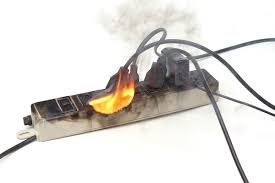Power quality. That’s the phrase I heard several times after chatting with some small business owners whose livelihood – as well as those of their employees – depends upon good power quality:
Good power quality can be defined as a steady supply voltage that stays within the prescribed range, steady a.c. frequency close to the rated value, and smooth voltage curve waveform (resembles a sine wave). In general, it is useful to consider power quality as the compatibility between what comes out of an electric outlet and the load that is plugged into it. The term is used to describe electric power that drives an electrical load and the load’s ability to function properly. Without the proper power, an electrical device (or load) may malfunction, fail prematurely or not operate at all.
Unfortunately for these small business owners, they don’t enjoy “good power quality” even though Xcel Energy, the state’s largest monopoly utility, has been promising to fix the problem within two years. But the promise was made four years ago.
Poor power quality costs these businesses money in lost time and damage to their equipment. They have no choice but to continue paying their monthly power bills because there is only one service provider – Xcel.
One business owner is so frustrated with Xcel’s poor power quality, inability to deliver sufficient power, and the monopoly’s lack of concern that he is seriously considering investing nearly $1 million in his own two megawatt generator.
Bills for “poor quality” on the rise
How much do these businesses pay? Quite a lot. One of them allowed us to review a recent bill, which we cannot show it in order to protect the business’s privacy. This business paid close to $55,000 in one month for poor power quality that is often insufficient to meet its demand.
Besides the amount, there are a few other things we noticed on the bill. For instance, Xcel provides “Daily Averages” of how much power is being used per day and the cost versus the previous year. Despite using nearly 5.4 percent less electricity in November 2017 versus November 2016, the cost per day is 13.2 percent higher – for insufficient and poor power quality. Xcel is charging them more but not providing them what they need.
According to the business owner, he has asked Xcel to provide them with additional power. He’s willing to pay for it, but Xcel won’t deliver. Why should the monopoly? The business owner can’t just go to another provider, and retail electric sales are not where Xcel makes its profits anyway. Profits come from building.
Another point of interest on the bill is the so-called cost savings program Demand Side Management (DSM), which costs this company an additional 2.4 percent. If DSM actually worked, this business, which is using less electricity, would be paying less. Instead it’s paying more based on its Daily Averages. When researching DSM last spring, we found that the goal of DSM is more about reducing fossil fuel usage and increasing Xcel’s profits then it is about saving ratepayers money.
Also, I reviewed the Clean Air Clean Jobs Act (CACJA) and Renewable Energy Standard Adjustment (30 percent predominantly industrial wind mandate) riders. Together they are more than 10 percent of the bill.
In total, charges meant to save the planet are 12.5 percent to this business’s monthly bill. It’s easily enough for another employee. Instead, the owner pays Xcel for poor power quality that doesn’t meet its power demand, which is an additional financial burden. As Xcel lobbies to raise rates and build more for its asset base, it fails to properly service the customers and infrastructure it has currently.
Q and A
All of this begs some questions, why are Xcel’s profits up 94 percent while power quality deteriorates? Why does Xcel want to build more when it doesn’t properly service the customers it does have? Who is looking out for ratepayers? Ratepayers deserve answers. Since Xcel is unlikely to answer and the PUC doesn’t seem to have ratepayers’ backs, maybe it’s time for lawmakers to demand a comprehensive and public audit of Xcel’s books. That way we all know what Xcel is doing with our money — because for ratepayers it isn’t going into delivering quality power.








